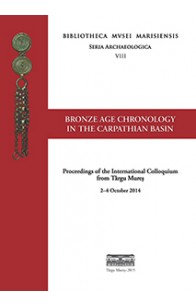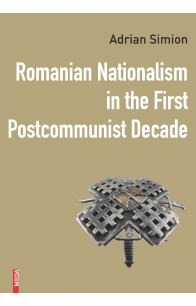Rezultate căutare pentru 'Adrian Ursu��iu'
„În urmă cu mai bine de 30 de ani, în timpul uceniciei pe șantierele arheologice ale profesorului Gheorghe Lazarovici, ne-am întâlnit pentru prima dată cu studiile interdisciplinare între arheologie și etnografie, religie etc. La vremea respectivă am considerat aceste inițiative drept un pionierat fără o finalitate în cercetarea fundamentală. La cercetările organizate de profesorul Gheorghe Lazarovici am avut onoarea să-l cunosc pe John Nandriș, care ne-a descchis drumul către această cercetare interdisciplinară. Remarc în mod deosebit aportul de nepreţuit al prof. univ. dr. John Nandriş care pe lângă faptul că a făcut posibilă implementarea unui proiect cu tematică etnoarheologică în România acelor ani a atras atenţia întregii lumi ştiinţifice asupra zonei de sud-est a Europei, mai ales a zonei muntoase înalte a munţilor din România, zone prea puţin explorate. Muzeul pe care astăzi îl conduc are bucuria de a prezenta specialiștilor, și nu numai, o serie de studii aprofundate ale acestui domeniu. Instituția noastră, pe lângă preocupările arheologice, acordă o atenție deosebită cercetărilor etnografice din spațiul Banatului de Munte. (..)
Volumul de față reunește studii deosebit de importante din ultimii 30 de ani, care deschid o nouă perspectivă asupra interdisciplinarității arheologice. Prezenta lucrare este o sinteză a unei munci asidue din partea unor cercetători de renume, care valorifică bogatul patrimoniu arheologic şi etnografic al spaţiului românesc. ” - dr. Adrian Ardeț
CONTENTS
Vorwort
Ondřej CHVOJKA
Chronologie und Kulturen der südböhmischen Bronzezeit und ihre Parallelisierung zu den Donaugebieten und Karpatenbecken
Viktória KISS–Szilvia FÁBIÁN–Tamás HAJDU–Kitti KÖHLER–Gabriella KULCSÁR–István MAJOR–Géza SZABÓ
Contributions to the Relative and Absolute Chronology of the Early and Middle Bronze Age in Western Hungary Based on Radiocarbon Dating of Human Bones
Marija LJUŠTINA–Katarina DMITROVIĆ
Core vs. Periphery: Some Stratigraphical and Chronological Remarks on the Vatin Culture in Banat and Western Serbia
Katarina DMITROVIĆ–Marija LJUŠTINA
Metal Finds as Indicators of Relations Between the Middle Bronze Age Cultures on Western and Northern Serbia
Florin GOGÂLTAN
The Early and Middle Bronze Age Chronology on the Eastern Frontier of the Carpathian Basin. Revisited after 15 Years
József PUSKÁS
Contact Zone: Middle Bronze Age Cultural Connections in the Valley of the Black River (Covasna County, Romania)
Neculai BOLOHAN–Alexandru GAFINCU–Iulian STOLERIU
Middle Bronze Age Chronology East of the Carpathian Area. A Bayesian Model
Horia CIUGUDEAN–Colin P. QUINN
The End of the Wietenberg Culture in the Light of new 14C Dates and its Chronological Relation Towards the Noua Culture
Rita E. NÉMETH
The Middle Bronze Age “Mass Grave” from Voivodeni–La Şcoală. A Chronological Approach
Tibor-Tamás DARÓCZI–Adrian URSUŢIU
Contextualising Decorations. A Study of Placement and Context of Ornaments on Bronze Age Ceramics from the Lower Feneş Valley
Gábor ILON
Zeitstellung der Urnenfelderkultur (1350/1300–750/700 BC) in West-Transdanubien. Ein Versuch mittels Typochronologie und Radiokarbondaten
Attila László
Über die Chronologie des kulturellen Wechsels zwischen der Noua-Coslogeni Kultur und der Nachfolger- Kulturen mit kannelierter und mit ritz- und stempelverzierter Keramik in den innen- und aussenkarpatischen Gebieten. Einige Lehren der Radiokarbondatierungen
János Gábor TARBAY
The Reanalysis of the Eponymous Hoard from Gyermely-Szomor and the HaA2 Period in the Territory of Hungary
Tiberius BADER
Zur Chronologie Der Lanzenspitzen im Karpaten-Donau-Raum
Abbreviations
Romanian nationalism has been and it still is a research topic that has generated and still generates various controversies, both at the level of the opinions of the authors who have dealt with this subject, and at the level of the interpretations that the reader can have on such a topic. And the analysis of the evolution of Romanian nationalism since 1989 is a theme that can be included in this framework of different, and sometimes even contradictory, approaches. Moreover, any analysis of post-communist Romanian nationalism may have its limitations, in terms of the authors’ approaches, and because, in general, approaches to nationalism have a certain potential for inaccuracy. The nationalist phenomenon is very complex because it refers to the people (the nation) and the country and quite often the boundary between nationalism and patriotism, for example, is quite weak. And in the Romanian case, things were even more complicated, both because the nationalism responded to a need for homogeneity existing in the post-communist Romanian society, and because the Romanian nationalism had a specific and quite complex typology.
In this paper, we referred more to those aspects that looked at the presence of nationalism in areas such as society, culture, religion or interethnic relations. Moreover, the period chosen for the study was rather a delicate one, considering the fact that the last decade of the twentieth century was, for Romania, a period of search of the road that the country needed to straighten, after half a century of totalitarian regime. And studying nationalism in such a historical context may have different interpretations, especially since post-communist Romanian nationalism, as some Romanian authors have stated, could be considered as paradigmatic for nationalism in general, because of its subtlety and complexity. (from the „Introduction”)





